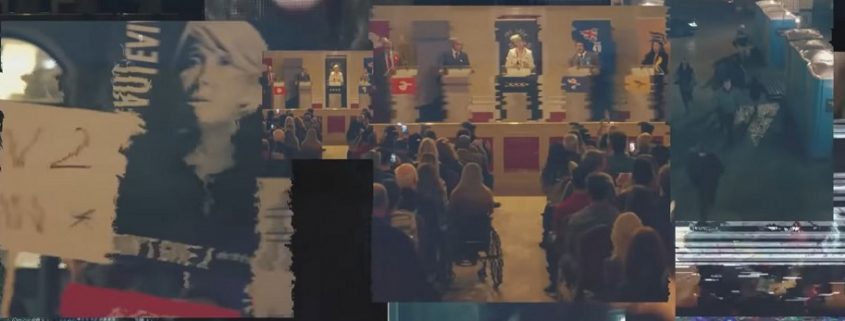The future of society in 15 years: a technology-fueled renaissance and social divides between humans and cyborgs
I was recently interviewed by SBS for the Australian launch of the BBC/HBO drama Years and Years, which through the series progresses from today until 15 years in the future.
Below is the text of the article, titled What will the future hold for us in 15 years?:
Imagine an Australia where we can talk telepathically to each other via implanted neural devices. Where robots make our beds, do our washing and unstack the dishwasher. Where omnipresent surveillance makes it harder to commit crimes, and easier to apprehend those who do.
Where a new social divide emerges between humans and cyborgs: those who choose to live in their natural state and those who choose to augment themselves, be it a bionic arm or a chip implant.
This is the Australia futurist Ross Dawson sees emerging in the next 15 years: not the bleak dystopian society depicted in the upcoming SBS drama Years and Years, but a country entering a technology-fuelled second renaissance across economics, politics, energy, genomic medicine, urban transport, biofuels, artificial intelligence and policing.
“We are at a particularly critical juncture in human history because of the degree of power that technology is giving us,” says Dawson, an international speaker and author who studies future trends and global change. “It is amplifying our capabilities.”
So what will the future look like?
We’ll see everything from the mainstream use of household robots capable of highly complex and sophisticated domestic tasks to the adoption of cyborg technology that integrates machine and human and allow us to augment our senses and intelligence.
For Dawson, this is the area where the most profound change will happen. “We have now reached a stage where the powers of technology have enabled us to change who we are. We are becoming, essentially, more than human.”
Such technology is already present, from the emergence of brain-machine interfaces (BMIs) that allow people to control robotic arms with their thoughts, to gait-training exoskeleton suits allowing the paralysed to walk (Elon Musk’s company Neuralink, incidentally, plans to implant neural electrodes into the paralysed by next year).
The more adventurous players in the so-called transhumanism movement are already biohacking their bodies with everything from young-blood transfusions to using the gene-editing technology CRISPR to transform DNA.
In 15 years, this will potentially be mainstream technology, giving rise to a new generation of ‘smart’ humans able to engage in brain to brain communication through implanted neutral interfaces, Dawson says. Superhuman traits – ultrasound hearing better than bats, the ability to easily lift a car – could become feasible, other futurists predict.
This radical blurring of the line between man and machine will raise bioethical and philosophical questions about what it means to be human and act as a hugely disruptive polarising social force, Dawson says, dividing those who augment and those who won’t or can’t.“These [devices] will be expensive so people who have greater resources will then be better able to augment themselves, further cementing their social privilege.”
All this change will be fundamentally disruptive, raising issues ranging from security and safety (“with neural interfaces, this includes others conceivably overhearing our thoughts, as well as malware issues”) to the erosion of privacy through omnipresent surveillance already seen in China’s use of drones and facial recognition software, to the disappearance of jobs as we know it: the World Economic Forum estimates that 65 per cent of children today will work in jobs that don’t even exist yet.
Will we end up replacing ourselves?
Dawson doesn’t believe so. Yes, machines will continue to outperform humans in certain tasks – humans can no longer beat a computer at chess, for example. “But I deeply believe that there are uniquely human capabilities, and these are deeper and broader and greater than many people believe.”
These qualities include everything from our inherent creativity – “humans are inventors, we have been since we first picked up a rock and used it to break into a nut or make fire” – to our capability for synthesis: “to be able to see the world around us, to make sense of it in ways we can use to make decisions, to apply our ethics.
“So no, I don’t forsee a time we will be transcending all human capabilities.”
Dawson sounds an important caveat. Innovation might be part of our DNA but we need to ensure that we remain at the centre of what we create, from technology to new ways of working to economic, social and political systems.
“I believe we can design a society that truly recognises and supports human capabilities in a way that allows us to prosper, and also, I believe, uncover more of our potential as humans.”
In short, the future is what we make it, let us heed the lessons from programs such as Years and Years to shape a future we want to live in rather than the ugly dystopia it portrays.



